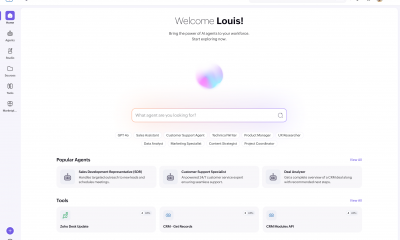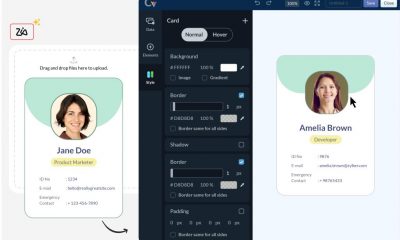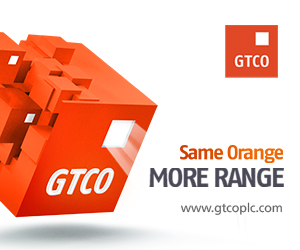Brands/Products
Zoho Upgrades Bigin to Redefine Small Business CRM Market
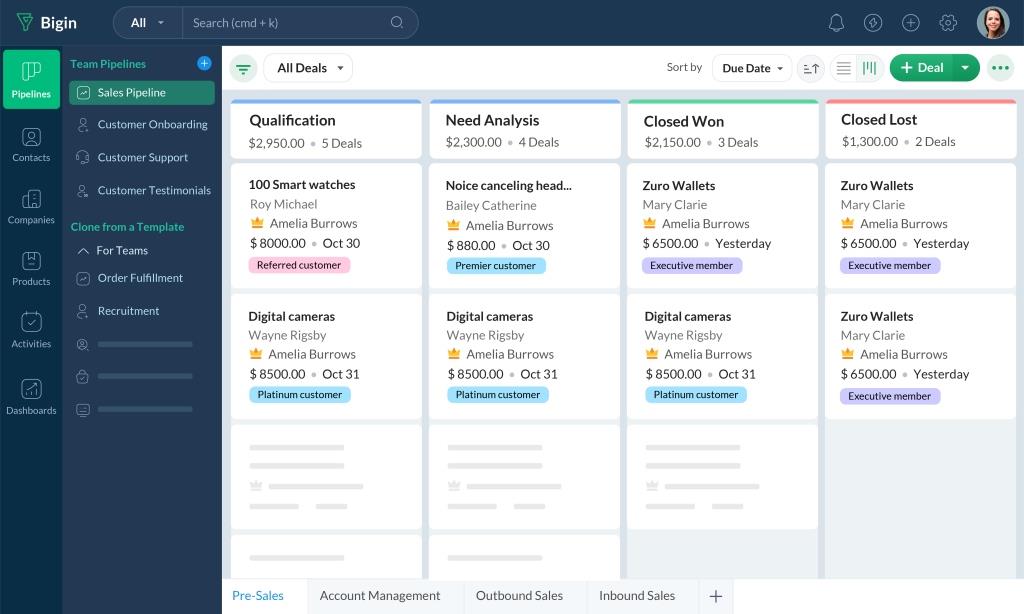
By Modupe Gbadeyanka
A leading global technology company, Zoho Corporation, has upgraded its customer relationship management (CRM) solution for small businesses, Bigin, with new features for better performance.
According to the firm, the platform has been fortified with new capabilities like team pipelines, toppings, and developer centres, which will allow users to manage all types of customer operations.
It is believed that the upgrade will redefine the small business CRM market as it would provide small and micro businesses with the tools and insights they need to maintain and grow meaningful and high-value relationships with customers in a challenging economic environment.
“Small businesses face challenges in choosing the right technology for managing their customer-facing operations because of constraints related to time, cost, and software implementation,” the Country Manager for Zoho Nigeria, Kehinde Ogundare, stated.
“Bigin is the only solution that brings together all customer operations like sales, onboarding, delivery, training, advocacy, and more into an intuitive interface that takes only 30 minutes to deploy.
“By bringing together all the facets of customer operations into a single view, Bigin allows small businesses to have a more accurate understanding of the customer’s journey.
“These insights help them attract and retain customers, ultimately growing the business. The fast-growing adoption of Bigin shows the expanding appetite of small businesses who want and need CRM technology suited to their particular needs, helping them move beyond old-school spreadsheets,” Ogundare added.
Since its launch in 2020, Bigin has stood out as a robust, easy-to-use, and welcoming CRM solution thanks to its 30-minute set-up promise. Bigin saw a revenue growth of 161 per cent in 2022 in Nigeria, indicating the revenue has doubled compared to 2021.
Zoho has observed that around 65 per cent of Bigin’s global customers have never used a CRM previously, making it the ideal choice for business owners who are looking to move away from spreadsheets.
When they outgrow Bigin, Zoho also offers them an easy migration to its full-fledged CRM solution. Bigin now boasts 20,000 customers and continues to help small and micro businesses manage all of their customer-facing operations within a unified platform.
The introduction of Team Pipelines allows customer-facing teams to manage their distinctive operations using a set of pipelines and sub-pipelines within a single Bigin account.
Competitive offerings often cater only to a single function — like sales — whereas Bigin is an efficient solution for all customer-facing teams. New features compile customer operations into one place and enable tighter alignment and collaboration between individuals and teams without compromising the simplicity that makes Bigin stand out.
The Connected Pipelines feature automates the flow of customer data across processes, improving the customer experience and saving time on manual data entry, while the Toppings feature allows the addition of additional functionality and third-party integrations to address specific business needs. Examples include the ‘Email-In’ topping, which maps emails to customer records and the ‘File Cabinet’ topping, which automates file collection and management.
The Dynamic Display allows users to customize the appearance of records in their pipelines, while the Developer Centre gives room for global app developers and partners to create custom solutions for unique business needs.
With various tools and components like custom fields, buttons, links, widgets, related lists, and REST APIs, developers can create new Toppings and monetise them in the Bigin Marketplace.
Bigin by Zoho CRM starts at N2,100/user/monthly (billed annually) for the Express edition and goes up to N3,600 user/monthly (billed annually) for the Premier edition, though a free edition is also available.
Brands/Products
Netflix to Buy Warner Bros. Discovery in $82.7bn Mega Deal
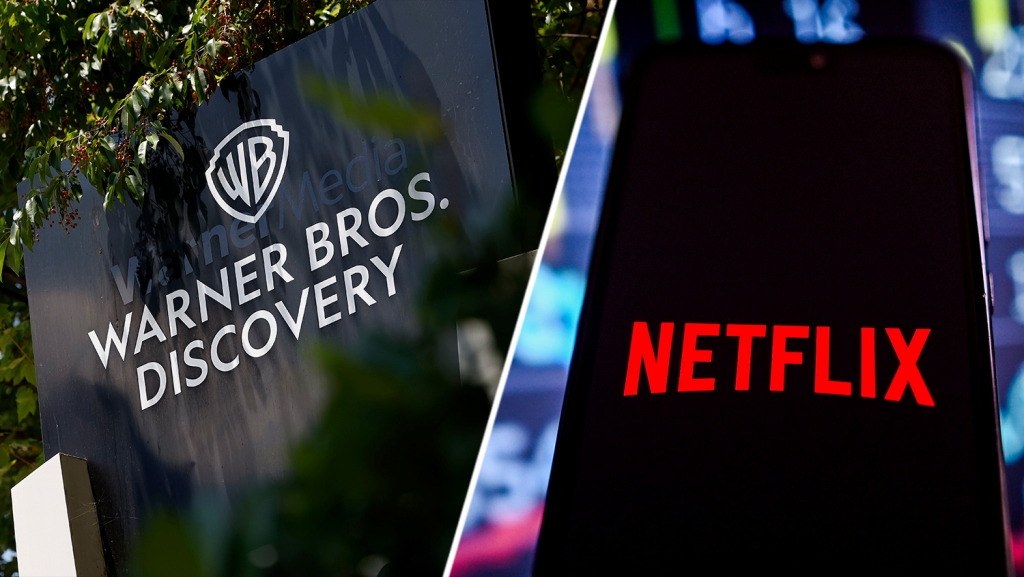
By Adedapo Adesanya
Netflix has reached a deal with Warner Bros. Discovery to buy the legendary TV and movie studio and assets like the HBO Max streaming service for $82.7 billion.
Warner Bros. Discovery is moving forward with its plans to split into two publicly traded halves in 2026. Once the split takes effect, Netflix intends to acquire the Warner Bros. half. The other half, Discovery Global, will house CNN and other cable channels. The Warner Bros. half includes its film and television studios, HBO Max and HBO.
The transaction values Warner Bros. Discovery at $27.75 per share, implying a total equity value of approximately $72.0 billion and an enterprise value of approximately $82.7 billion.
The deal is subject to regulatory conditions, of which there will be several, due to the size of the companies involved and what it means for competitiveness.
For several weeks, Paramount was thought to be the frontrunner in the auction for Warner Bros. Discovery. Paramount executives, who want to buy all of Warner Bros. Discovery – including its cable assets – were confident about their merger proposal and their mutually beneficial relationship with President Donald Trump.
However, Netflix surprised many with the boldness of its bids as it agreed to the same costly breakup fee that Paramount proposed, according to reports. This means the would-be buyer will pay Warner Bros. Discovery billions of dollars if the deal is not completed.
“Our mission has always been to entertain the world,” said Mr Ted Sarandos, co-CEO of Netflix. “By combining Warner Bros.’ incredible library of shows and movies—from timeless classics like Casablanca and Citizen Kane to modern favorites like Harry Potter and Friends—with our culture-defining titles like Stranger Things, KPop Demon Hunters and Squid Game, we’ll be able to do that even better. Together, we can give audiences more of what they love and help define the next century of storytelling.”
Mr Greg Peters, the other co-CEO of Netflix, said the acquisition would “improve our offering and accelerate our business for decades to come,” adding: “Warner Bros. has helped define entertainment for more than a century and continues to do so with phenomenal creative executives and production capabilities. With our global reach and proven business model, we can introduce a broader audience to the worlds they create—giving our members more options, attracting more fans to our best-in-class streaming service, strengthening the entire entertainment industry and creating more value for shareholders.”
“Today’s announcement combines two of the greatest storytelling companies in the world to bring to even more people the entertainment they love to watch the most,” said David Zaslav, President and CEO of Warner Bros. Discovery. “For more than a century, Warner Bros. has thrilled audiences, captured the world’s attention, and shaped our culture. By coming together with Netflix, we will ensure people everywhere will continue to enjoy the world’s most resonant stories for generations to come.”
The terms of the agreement will see each Warner Bros. Discovery shareholder receive $23.25 in cash and $4.50 in shares of Netflix common stock for Warner Bros. Discovery common stock share.
Brands/Products
Video Gaming Firm Xsolla Offers Nigerians Paga Payment Option
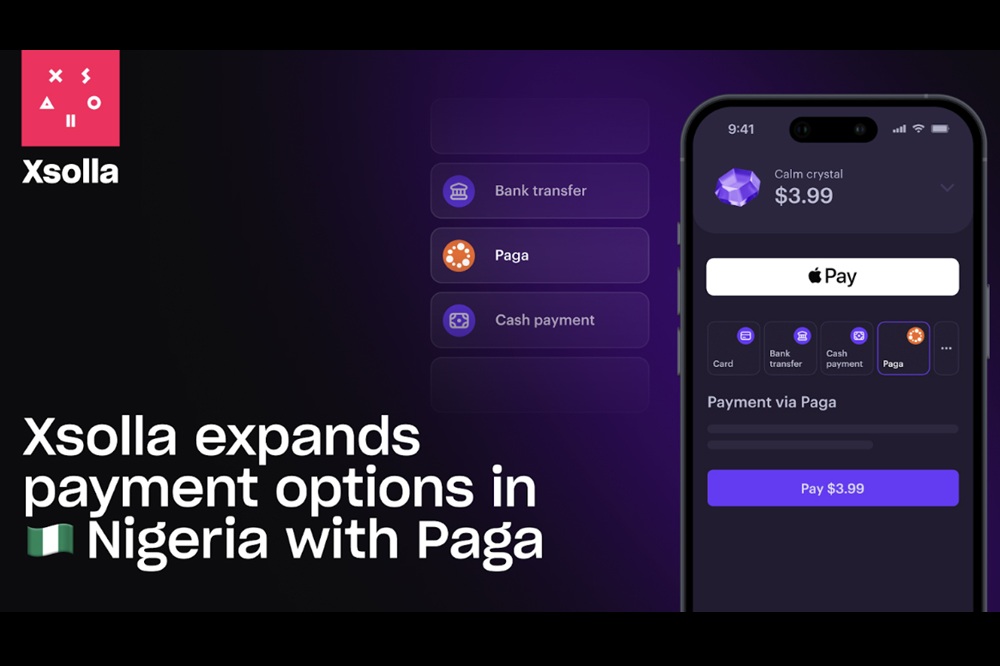
By Aduragbemi Omiyale
A global video game commerce company, Xsolla, has integrated Nigeria’s Paga into its payment system, allowing Nigerians more secure payment options.
Xsolla helps developers launch, grow, and monetize their games and with a large market available in Nigeria, with a population of over 230 million people, working with Paga is a good idea.
With services like Pay with Paga, Bank Transfers with Paga, and Cash by Paga, Xsolla provides a comprehensive payment solution that caters to diverse needs.
Serving more than 20 million users and processing massive volumes nationwide, Paga is one of Nigeria’s largest licensed mobile-money operators.
By integrating Paga’s full suite of payment options, players can enjoy seamless transactions, whether through quick in-app purchases, bank transfers, or cash deposits – with instant confirmations and reduced friction for all types of payments.
“Introducing Paga as a new payment method to players in Nigeria reflects our commitment to meeting players where they are,” said Chris Hewish, President at Xsolla.
“Paga’s strong local presence and trusted platform make it easier for Nigerian players to engage confidently, ensuring that convenience and security go hand in hand.”
From Nigeria to the world, Xsolla provides every payment method developers need to grow and monetize their games globally.
Local payment methods are crucial, enabling developers to reach every player, increase transaction conversions, and drive more sales and revenue. With Paga in Nigeria, it’s easier than ever to pay, play, and succeed.
Key benefits of the Paga integration include instant confirmations, localized experiences, and increased market reach and conversion.
Brands/Products
Temu Partners Dellyman to Scale Logistics Capabilities Across Nigeria

By Modupe Gbadeyanka
As part of its strategies to aggressively scale its logistics capabilities across key African markets, especially in Nigeria, the fast-growing global e-commerce powerhouse, Temu, has entered into a delivery partnership with Lagos-based logistics startup, Dellyman.
Through this collaboration, Temu customers in Nigeria will experience faster, more predictable, and more transparent deliveries, a critical factor in sustaining the platform’s customer satisfaction as order volumes continue to rise.
Dellyman’s technology-driven approach, spanning rider management, route optimisation, and customer visibility, played a central role in Temu’s selection process.
In the pilot phase, Dellyman completed more than 1,300 deliveries with a 95 per cent success rate, demonstrating its readiness to support large-scale e-commerce operations nationwide.
Founded in 2020, the firm has grown into one of Nigeria’s most reliable same-day and last-mile delivery platforms.
The company recently achieved a 10,000-order monthly delivery milestone in November 2025, contributing to a cumulative total of more than 300,000 lifetime deliveries.
This track record made Dellyman a strong fit for Temu, which is aggressively scaling logistics capabilities across key African markets.
“Our partnership with Temu is a major endorsement of the vision we set out with, to build Nigeria’s most reliable, scalable, and transparent last-mile delivery infrastructure.
“Achieving a 95 per cent delivery success rate during the pilot underscores our readiness to support high-volume e-commerce platforms.
“This collaboration shows that local startups can meet and exceed global standards when given the opportunity,” the chief executive of Dellyman, Mr Dare Ojo-Bello, said.
He further noted that the partnership represents more than operational growth as it signals a shift in how global e-commerce brands view Nigerian logistics capabilities.
“This is not just about fulfilling orders; it is about reshaping perceptions of what Nigerian delivery companies can achieve. We are committed to building the kind of infrastructure that supports international standards, empowers local businesses, and ultimately strengthens consumer trust in the broader digital economy,” he noted.
Mr Ojo-Bello added that Dellyman will continue investing in capacity, fleet expansion, and merchant-facing tools to ensure superior delivery experiences for Temu buyers and other online shoppers nationwide.
-

 Feature/OPED6 years ago
Feature/OPED6 years agoDavos was Different this year
-
Travel/Tourism9 years ago
Lagos Seals Western Lodge Hotel In Ikorodu
-

 Showbiz3 years ago
Showbiz3 years agoEstranged Lover Releases Videos of Empress Njamah Bathing
-

 Banking7 years ago
Banking7 years agoSort Codes of GTBank Branches in Nigeria
-

 Economy3 years ago
Economy3 years agoSubsidy Removal: CNG at N130 Per Litre Cheaper Than Petrol—IPMAN
-

 Banking3 years ago
Banking3 years agoFirst Bank Announces Planned Downtime
-

 Banking3 years ago
Banking3 years agoSort Codes of UBA Branches in Nigeria
-

 Sports3 years ago
Sports3 years agoHighest Paid Nigerian Footballer – How Much Do Nigerian Footballers Earn





